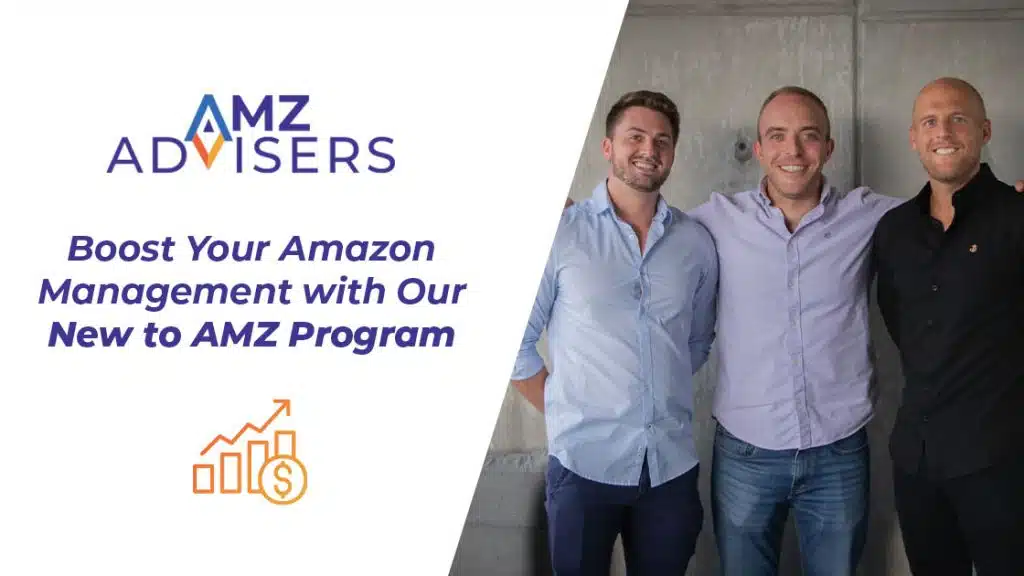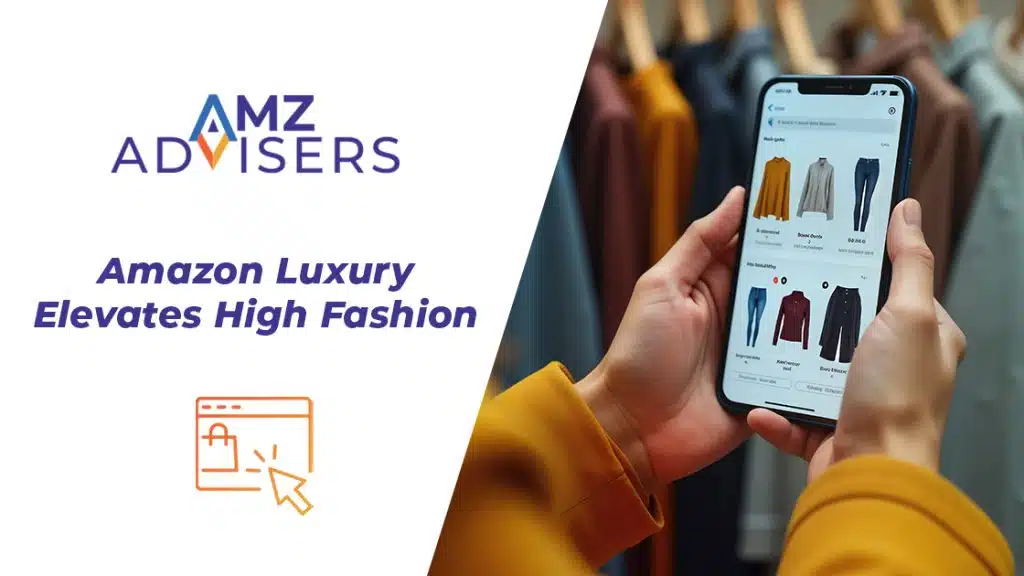Let’s understand how Amazon Sponsored Display works and how you can decide if it’s a good option for your business.
With more than 1.9 million active sellers, it’s no surprise that so many sellers struggle to stand out on Amazon, even when investing a lot of time in organic strategies.
Sponsored Display ads solve this problem by placing your ads in front of people who are most likely to want your products. This means that you’ll advertise for users who’ve shown interest in similar offers, or that have already interacted with your brand.
So, if you want to go beyond organic growth, it is time to check what sponsored display ads can do for you.
What is Amazon Sponsored Display?
This is a type of Amazon advertising designed to help sellers promote their products on and off the marketplace. Amazon launched these ads in 2019 to increase product visibility and drive sales.
Amazon Sponsored Display ads target potential customers, based on their browsing behavior, purchase history and interests.
Basically, when a potential customer views your product, you can continue to promote that item across the “Amazon Display Network”. This service includes Amazon pages, competitor listings, and third-party websites and apps.
These ads are available to sellers enrolled in Amazon Brand Registry. They’re also available to Amazon vendors and agencies selling products on Amazon in the following regions:
- North America. Canada and the US
- Europe. Germany, Spain, France, Italy and the UK
- Middle East. United Arab Emirates
- Asia Pacific. India and Japan
How Sponsored Display Campaigns Work
Unlike Sponsored Brand ads that focus on increasing awareness, Sponsored Display campaigns use Amazon’s data to target specific audiences in three forms:
- Views remarketing. Targeting shoppers who have looked at your product or similar offers, but haven’t bought anything.
- Interest-based targeting. Reaching people based on their browsing and purchasing behaviors, allowing you to show your ads to those interested in categories related to your product.
- Purchases remarketing. Targeting customers who have bought your product or similar products to make them buy complementary items or even repeat their previous purchase.
Now, where do sponsored Display ads appear? Well, almost anywhere! They can show up on Amazon product detail pages of similar or complementary items on the Amazon home page, and even on external websites and mobile apps through Amazon DSP.
So, your ads will reach potential customers whether they are browsing on Amazon or other sites.
Sponsored Display Cost
Amazon charges for Sponsored Display on a cost-per-click (CPC) model. This means you only pay when someone clicks on your ad.
The cost of each click depends on how competitive your product category is, and how much you bid for your ad placements. For example, ads for popular categories like electronics might cost more than ads for less competitive categories, such as handmade crafts.
You can set a daily budget, so you control how much you spend. For instance, you might set a budget of $10 per day. Once that limit is reached, your ads will stop showing until the next day.
How to Set up a Campaign
Go to advertising.amazon.com and click on the “Products” tab at the top. Alternatively, log into your Seller Central account, click on “Advertising,” and select “Campaign Manager” from the drop-down menu.
Choose Your Campaign Type
Click on “Sponsored Display” under “Choose your campaign type.” Give your campaign a name, set the date range and choose a daily budget.

Pick Your Targeting Option
Choose between “Audiences” or “Product Targeting” for your ads. If you choose “Audiences,” you can target based on “Views Remarketing,” “Searches,” or “Purchases.”
Choose Your Products and Bid
Select the products you want to advertise and set your per-click bid. While each ad will display one product at a time, you can choose multiple items. The Amazon algorithm will decide which product to show based on the target audience.
Customization
Amazon automatically targets “Advertised Products” and “Similar to Advertised Products.” You can also add specific categories you want to target.
Add your logo or choose an engaging headline if you want. If you prefer, Amazon can handle the ad design for you.
Preview Your Ad
Amazon will show you a preview of how your ad will look before it goes live, so you can decide where you want your ads to appear on Amazon.
Set Your Bid Amount
Choose how much you’re willing to bid to win the ad placement. Amazon will adjust spending based on how likely it thinks someone is to buy after seeing your ad.
Your daily budget limit will always be respected.
Launch Your Campaign
Click “Launch Campaign.” Amazon will handle the rest, and there’s no need to wait for approval.
Benefits of Sponsored Display
Now that we know how Amazon Sponsored Display ads work, it is time to see why you should use them.
Increased Visibility
Sponsored display ads appear on various platforms, including Amazon and even external websites. For example, if someone is searching for kitchen appliances, they might repeatedly see your ad for a blender across different sites they visit.
Targeted Advertising
One of the most powerful features of Sponsored Display ads is their ability to target specific audiences. For instance, if someone previously bought your brand of shampoo, they might see an ad for your conditioner.
This targeted approach turns interested shoppers into buyers and encourages repeat purchases.
Easy to Use
Amazon’s ad creation tool is pretty user-friendly, even for those sellers with limited advertising experience. The tool helps you set up and customize your ads without struggling or looking for tutorials.
You can easily upload your product image or craft a compelling headline. This simplicity means you can create effective ads without needing extensive marketing expertise, allowing you to focus on running your business.
Performance Tracking
Amazon provides detailed data to track your marketing performance. You can see how many people view your ad, how many click on it, and how many make a purchase.
For example, if you notice that ads with a specific image get more clicks, you can use similar images in future ads.
Performance tracking helps you understand what works and what doesn’t, allowing you to continuously improve your campaigns and maximize your ROI.
Cost Control
You set a daily budget and only pay when someone clicks on your ad, ensuring you don’t overspend. For instance, if you set a budget of $15 per day, your ads will stop showing once this limit is reached, preventing unexpected expenses.
This cost-control feature is particularly useful for small businesses looking to manage their marketing expenses effectively.
Related content: Amazon Sponsored Products
When Not to Use Sponsored Display
While Sponsored Display ads can be very effective, there are times when they might not be the best choice.
Limited Budget
If your budget is very tight, you might find it hard to compete with bigger sellers. In this case, focusing on organic search and optimizing your product listings might be more cost-effective.
Low-Profit Margins
If your profit margins are low, the CPC model might be damaging for your profits. If this is the case, you can look at other ways of advertising, or even a long-term organic growth strategy.
Highly Competitive Categories
In very competitive categories, CPC can be very high. If you are just starting out and can’t afford high bids, you might want to consider other strategies first.
Products with Low Demand
If your product is very niche and has low demand, Sponsored Display ads might not bring a good ROI. In this case, using targeted keywords and focusing on a smaller, more interested audience might be more effective.
Unattractive Product Listings
If your product listings are not well-optimized, even the best ads might not convert into sales. Make sure your product pages are appealing and informative enough before investing in ads.
Introduction to Sponsored Display Ads Course

If you’d like to dive into the benefits of this new tool, take the Introduction to Sponsored Display course to find out if this service will fit into your current advertising strategy.
Final Thoughts
Sponsored Display is a good resource for those looking for a pay-per-click option. However, remember to evaluate if this is a sustainable option for your business.
In the meantime, focus on having SEO-optimized descriptions, a good Amazon storefront, nice product pictures, and an stellar organic strategy. Paid ads are a complement, so you need to have all these aspects sorted if you want to see good results.
Author
 Antonella Fleitas is highly adept at creating fact-based, evergreen content about science, language learning, and culture. Her main goal is to build a strong content foundation for her clients, based on meaningful stories that people can learn from.
Antonella Fleitas is highly adept at creating fact-based, evergreen content about science, language learning, and culture. Her main goal is to build a strong content foundation for her clients, based on meaningful stories that people can learn from.



